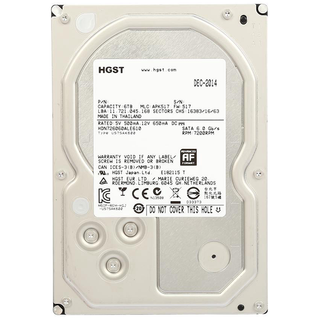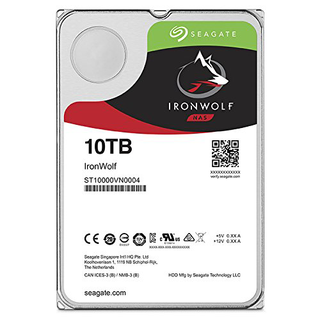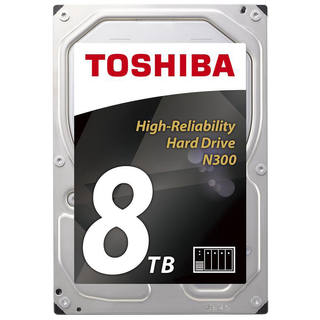Seagate IronWolf 12TB HDD Review
Why you can trust Tom's Hardware
Desktop Performance
Comparison Products
We divided our performance testing into two sections. On this page, we use a single drive in a desktop system to measure baseline performance. NAS-focused disk drives have become very popular in desktop systems as secondary drives. The increased vibration resistance improves the performance consistency in systems with several fans and other cooling components, like liquid pumps. Vibration will slow all hard disk drives, even those we're testing today, but the additional sensors and firmware optimizations help ensure the best performance.
All of the drives in our tests are built for NAS environments. IronWolf's direct competition comes from Western Digital's Red product line, and we included two largest Red drives in our tests. The Red series products all have a 5,400-RPM spindle speed.
The rest of the drives have faster 7,200-RPM spindle speeds. The 6TB HGST Deskstar NAS and 6TB WD Red Pro are two older models, while the 8TB Toshiba N300 recently came to market.
Sequential Read Performance
To read about our storage tests in-depth, please check out How We Test HDDs And SSDs. We cover four-corner testing on page six of our How We Test guide.



On paper, the 12TB and 10TB Seagate IronWolf's share the same 210 MB/s sequential performance rating with the 10TB WD Red. The 8TB Red has a lower 178 MB/s rating. The two Seagate drives deliver more than the claimed 210 MB/s during our sequential read test; we measured up to 258 MB/s of throughput. The IronWolf drives also deliver higher performance on the slower inner tracks. The performance gap between the drives shrinks when the drives encounter those slower tracks.
Sequential Write Performance



IronWolf's sequential advantage carries over to the write test. We measured a peak of 252 MB/s with the 12TB model. The 10TB model wasn't far behind with 244 MB/s. The 10TB Red trails with 220 MB/s.
Random Read Performance



HDD vendors have increased random performance over the last two years with larger DRAM caches and advanced technologies that store data on the fastest area of the platters for a short time. The drive later migrates the data to other areas of the disk for long-term storage.
At low queue depths, the 12TB IronWolf only has a small advantage over the other products, but the gap increases as we ramp up the queue depth. Even during heavy use, you will not reach QD32 often. But you will reach higher queue depths more frequently with an HDD than you will with an SSD.
Random Write Performance



The 12TB IronWolf distances itself from the 10TB model in the random write test even though both have a 256MB DRAM cache. Like the sequential tests, random write performance doesn't scale as we increase queue depth.
80% Mixed Sequential Workload
We describe our mixed workload testing in detail here and describe our steady state tests here.
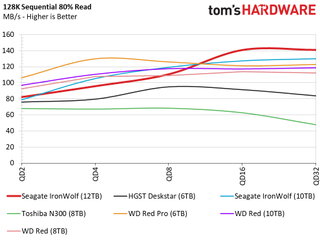
The IronWolf's leading sequential write throughput doesn't carry over to the mixed workload test. This is disappointing because most of the data you'll store on these drives comes in the form of large files. It's important to be able to read and write data simultaneously without losing performance. You'll encounter those situations more often if you share a NAS with your family or use one in an office environment.
80% Mixed Random Workload
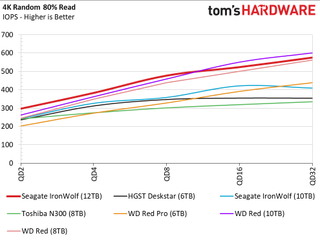
The 12TB IronWolf fares better in the mixed random test. It joins the two largest Red HDDs (10TB and 8TB). The two WD drives have slower spindle speeds but manage to beat the 10TB IronWolf in this workload. That's a surprising outcome. Low performance in the mixed random test often carries over to the application tests.
Sustained Mixed Sequential Workload



This test measures performance in eleven different sequential mixtures. Given the large sequential read and write advantage, we expect the 12TB IronWolf to dominate in the middle where the mixture is evenly split. The results are much closer than we expected.
Random Steady-State

The Western Digital Reds (10TB and 8TB) deliver dominating bandwidth and performance consistency during the sustained random write workload.
PCMark 8 Real-World Software Performance
For details on our real-world software performance testing, please click here.










The IronWolf HDDs distance themselves from the other products. We did have an odd outlier with the 12TB model in the Excel test. We ran the full test suite three times and recorded the same offbeat result every time. This is most likely a corner case in the firmware of our early product sample.
Application Storage Bandwidth
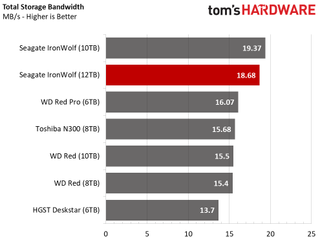
The Seagate drives stand out from the others we tested today. The Seagate 12TB and 8TB IronWolf are very good choices if you want to use a small SSD for a boot volume and install application software on a secondary drive.
MORE: Best SSDs
MORE: How We Test HDDs And SSDs
MORE: All SSD Content
Stay on the Cutting Edge
Join the experts who read Tom's Hardware for the inside track on enthusiast PC tech news — and have for over 25 years. We'll send breaking news and in-depth reviews of CPUs, GPUs, AI, maker hardware and more straight to your inbox.
-
StevenRix_from_France This article sounds like an apology to why Seagate's trust should be restored. If the 8Tb drives failed in a short amount of time, the similar products with bigger space might just do the same thing. Changing the segment name to make us think those products won't fail again is just a frivolous marketing stunt. There are too many problems with Seagate's drives: predictive failures that happen a few weeks later, the platters are bad quality, firmwares that are often buggy, and probably planned obsolescence, are just enough redflags as to why this company is not serious enough to stay in that business' segment.Reply
I also read the article twice, there are a bunch of affirmations that I completely disagree with, it's not even a different point of view, it's just a point of view based of presenting a situation and a reality in a given time (example Seagate increased product quality, but prices also shot up). It's always the same thing, prices go up to get the executives bigger bonuses, nothing else. That being said, there are fortunately other competitors in the market. -
okenny what about power consumption and heat?Reply
WD has vastly reduced watt/GB on their most recent models... -
sstanic But the noise numbers are OK..no, wait, there are no noise numbers. If only our smartphones could measure it.. And WD Red and Red Pro 10TB are available for a good while now, not "just recently". They are made with HGST Helium technology, a big plus.Reply -
decker.davison shoot, I had been eyeballing the 6TB to buy a couple for a raid 1 mirrored array to replace my 2000GB barracuda array that's degraded from a single failed drive after running fine for at least 5 years. these comments are making me hesitant even though I had been all about Seagate early last decade.Reply -
honorousjack Same here Decker. All I want is a large fast drive, I've been doing research on Ironwolf and other drives but these comments seem a little bit biased, don't they?Reply
